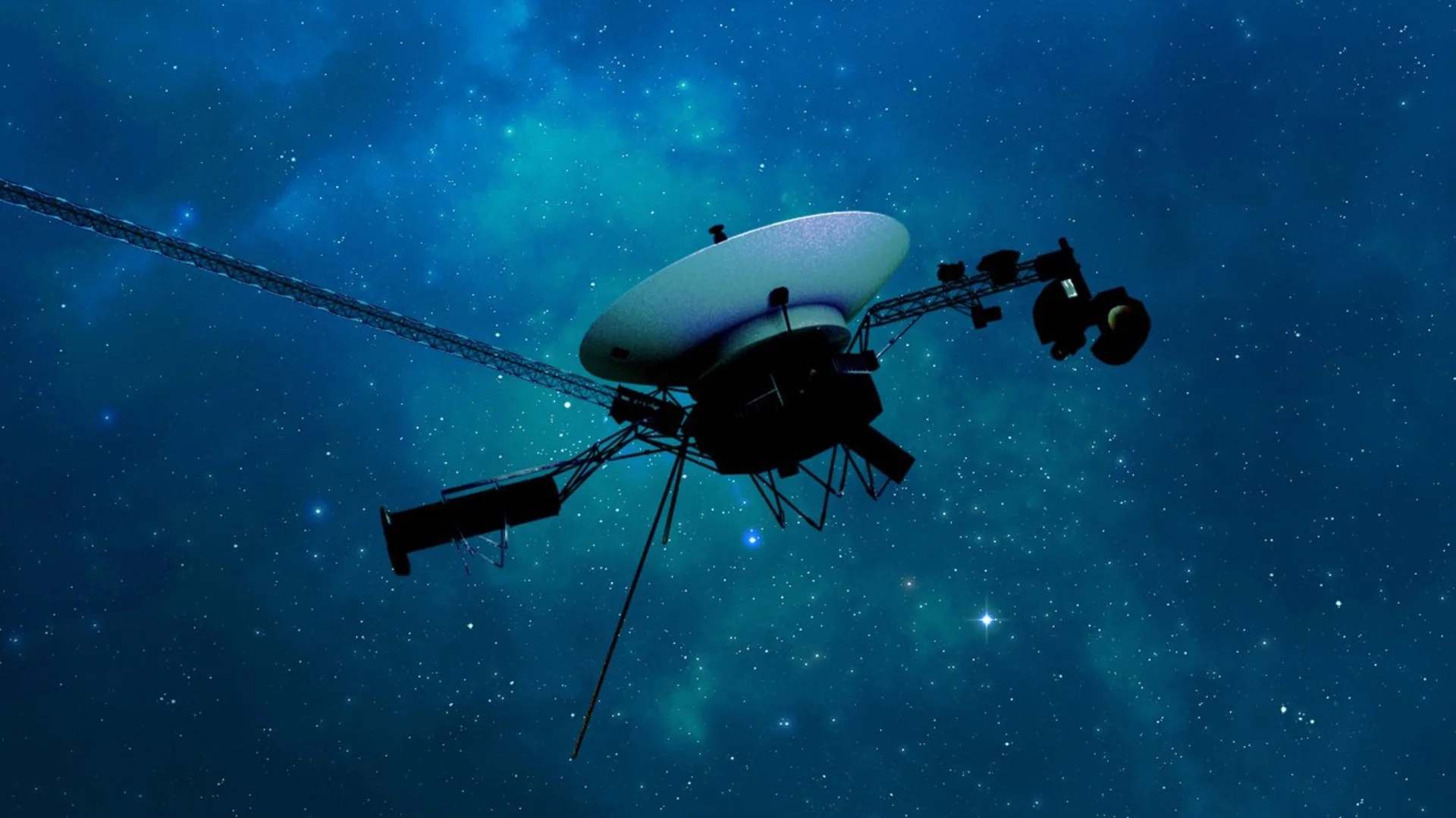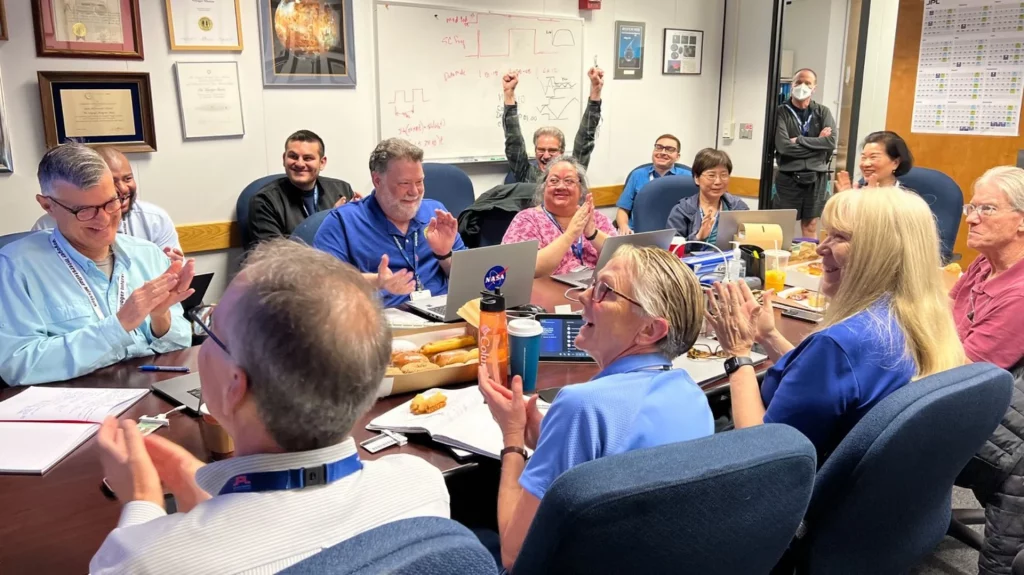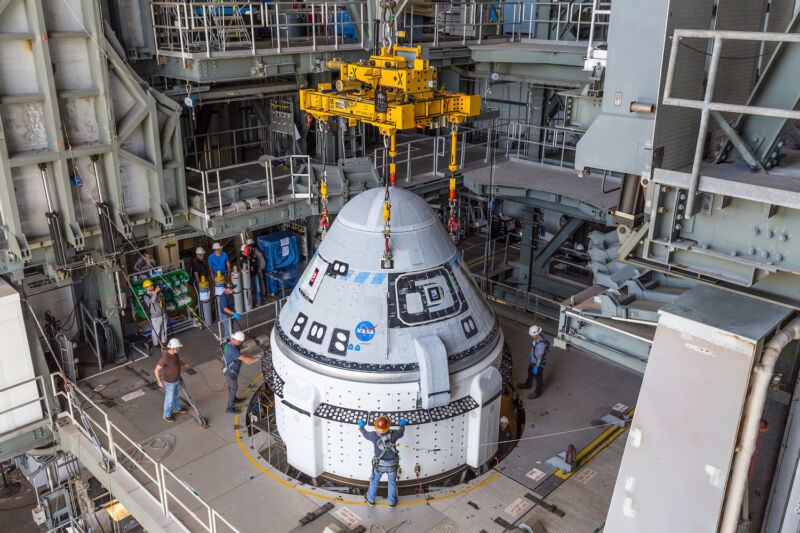
Ça y est, la vénérable sonde spatiale
Voyager 1
de la NASA refait parler d’elle ! Après des mois de silence radio
qui ont fait transpirer les ingénieurs
, notre exploratrice de l’espace lointain a enfin daigné donner de ses nouvelles puisque pour la première fois depuis le 14 novembre 2023, elle renvoie des données utilisables sur l’état de santé de ses systèmes embarqués. Ils respirent mieux à la NASA.
Il faut dire que la mission nous a offert quelques sueurs froides ces derniers temps car depuis cette date, elle continuait bien à recevoir et exécuter les commandes envoyées depuis la Terre, mais impossible d’obtenir en retour des infos cohérentes sur son fonctionnement. Alors les enquêteurs du Jet Propulsion Laboratory de la NASA ont mené l’enquête et ont fini par identifier le coupable : un des trois ordinateurs de bord, le fameux «
flight data subsystem
» (FDS) responsable de la transmission des données, était en cause. Un seul circuit défectueux qui stocke une partie de la mémoire du FDS avec une portion cruciale du logiciel… et bim, panne générale avec perte des trames de données !
Pas évident de réparer ça à des milliards de kilomètres de distance et comme souvent, quand on ne peut pas changer le hardware, il faut ruser avec le software. L’équipe a alors élaboré un plan génial : découper le code incriminé et le stocker à des endroits différents de la mémoire du FDS. Un vrai casse-tête type jeu de « Mémory » pour recoller les morceaux correctement sans faire sauter la banque mémoire !
Puis banco ! Premier essai le 18 avril, ils transfèrent le nouveau code maison spécial «
télémétrie de l’état des systèmes
» dans la mémoire du FDS et environ 45 heures plus tard, en comptant les 22h30 de trajet aller-retour du signal radio, les ingénieurs reçoivent les précieuses données tant attendues.
Yes !!! Voyager 1 est de retour aux affaires et recommence à parler de sa santé !
Regardez comme ils sont contents à la NASA :
Outre le soulagement de voir la communication rétablie, c’est une belle prouesse technique et un formidable pied-de-nez à l’obsolescence programmée. Pas mal pour une sonde lancée en 1977 et qui fête ses 46 ans ! Quand on vous dit que le matériel était bien meilleur à l’époque. 😉😜
Maintenant l’équipe du JPL va pouvoir se consacrer aux prochaines étapes à savoir relocaliser petit à petit les autres bouts de code du FDS pour retrouver une configuration nominale, puis renouer avec la transmission des données scientifiques et le but premier de la mission, à savoir explorer les confins de l’espace interstellaire !
Pendant ce temps, sa petite sœur
Voyager 2
, lancée 16 jours plus tard en 1977, poursuit tranquillement sa route aux frontières du système solaire sans faire de vagues. Une fiabilité à toute épreuve pour ces deux merveilles technologiques qui auront marqué l’histoire de l’exploration spatiale qui avant même de s’aventurer dans le « grand vide » interstellaire, nous ont offert des clichés époustouflants de
Jupiter
,
Saturne
,
Uranus
et
Neptune
.
Et qui sait, peut-être qu’un jour, elle captera peut-être un signal extraterrestre ou tombera nez-à-nez avec une civilisation alien super évoluée technologiquement…
Vers l’infini et au delà, les amigos !
Source
 chevron_right
chevron_right










